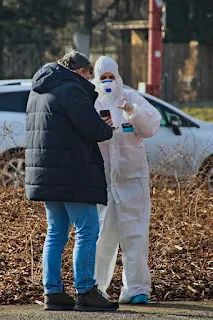courtesy photo
Forensic Perspectives by Dr. Lorra Corrales
Introduction
Before bullets and fingerprints, there was poison.
For centuries, it was the killer’s weapon of choice—silent, untraceable, and devastating. From powdered arsenic in tea to high-tech nerve agents, poison has evolved—but so has the science of detecting it.
Welcome to the world of forensic toxicology, where chemistry meets justice, and the smallest trace can expose the deadliest secrets.
1. A Dark Past: Poison Through History
Poison has a long and infamous legacy:
Ancient Rome: Political enemies fell mysteriously ill—arsenic was called the “inheritance powder.”
Medieval Europe: Royalty lived in fear of tainted wine and perfumed toxins.
Victorian England: The rise of domestic poisonings led to public panic—and the birth of toxicology.
In many historical cases, victims seemed to die “naturally”—until forensic breakthroughs proved otherwise.
2. The Birth of Toxicology
The field truly began with Mathieu Orfila in the 1800s, the “father of modern toxicology.”
He pioneered ways to test for arsenic in tissues—revolutionizing criminal investigations.
Since then, toxicology has evolved to detect hundreds of substances, from drugs and alcohol to synthetic chemicals and biotoxins.
3. How Toxicology Works Today
Modern forensic toxicologists analyze:
Blood, urine, and hair
Tissue samples and stomach contents
Scene evidence (bottles, food, syringes)
They use:
Gas chromatography to separate substances
Mass spectrometry to identify molecules
Immunoassays to detect drug classes
Even nanogram-level traces can tell whether someone was poisoned, overdosed, or impaired.
4. Real Case Impact
Alexander Litvinenko (2006): A Russian defector poisoned with polonium-210, a rare radioactive isotope. Toxicology confirmed it.
Tylenol Murders (1982): Cyanide-laced capsules killed 7 in Chicago. Toxicologists identified the contaminant, triggering nationwide packaging reforms.
Without toxicology, these crimes might’ve gone unsolved.
courtesy photo
5. Poisons of the Present
Today, forensic toxicologists battle:
Synthetic opioids like fentanyl
Designer drugs that constantly change formulas
Environmental toxins (lead, mercury)
Chemical warfare agents
In a world where poisons are harder to trace than ever, science is catching up fast.
Conclusion: Truth in Every Drop
Poison kills quietly.
But forensic toxicology speaks louder.
From royal assassinations to modern overdoses, toxicologists are the unseen investigators bringing the invisible into focus—one molecule at a time.
Next in the series: Killer on the Line: How Voice Analysis Helps Solve Crimes
#ForensicToxicology #PoisonedTruth #HistoryOfPoison #ScienceOfJustice #ToxicSecrets








